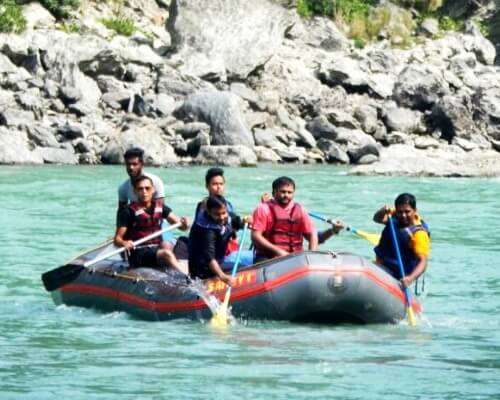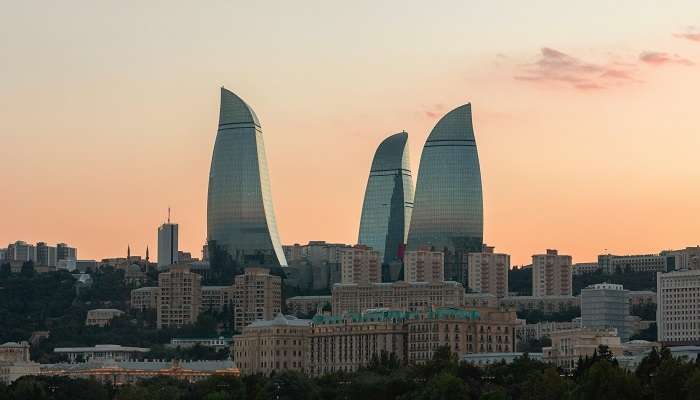Here’s Why Losar – The Tibetan New Year Should Be In Your 2025 Bucketlist
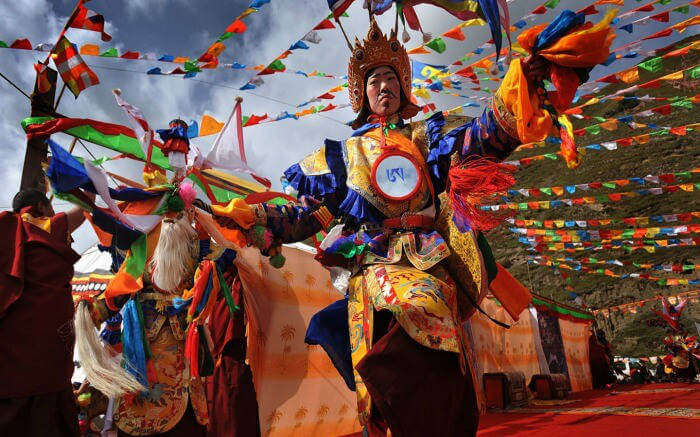
While the world welcomes the new year in loud discotheques and concerts, Tibet has its own vibrant way of embracing Losar Tibetan New Year—which falls in February. The merry affair is an extravagant display of Tibetan traditions, customs, and beliefs blended with enthusiasm and excitement. It is also the time when farmers celebrate the harvest. Here’s what Losar is about and why you must attend this kaleidoscopic Tibetan New Year 2025.
Losar – The Tibetan New Year: Celebrations
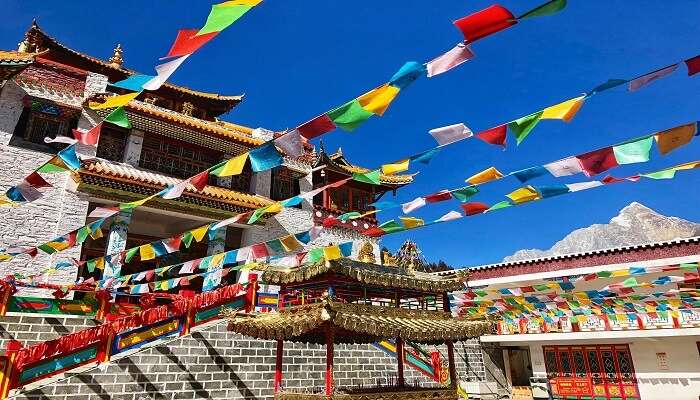
The Tibetan word Losar means New Year. Also known as Bal Gyal Lo, Losar celebrations include three days of revelry and merrymaking. They are a much-awaited event that features prayers, chanting, folk music, dance drama, and many other performances. The celebrations also include exciting competitions such as arrow shooting and horse racing.
The grand festivities create a beautiful holiday time for culture enthusiasts and photographers. It is also an excellent opportunity for solo travellers and families to explore the traditions and customs of Tibet. Attending the spring new year and participating in the Tibetan festivities is a delight.
Also Read: Sakya Monastery
Looking To Book A Holiday Package?
Book memorable holidays on TravelTriangle with 650+ verified travel agents for 65+ domestic and international destinations.
Day wise festivities
People celebrate Losar with good food, new clothes, and spending time with their family. It begins two days before the new year and ends on the first day.
Day 1: Choe-Kyong Losar – The first day of the Tibetan calendar
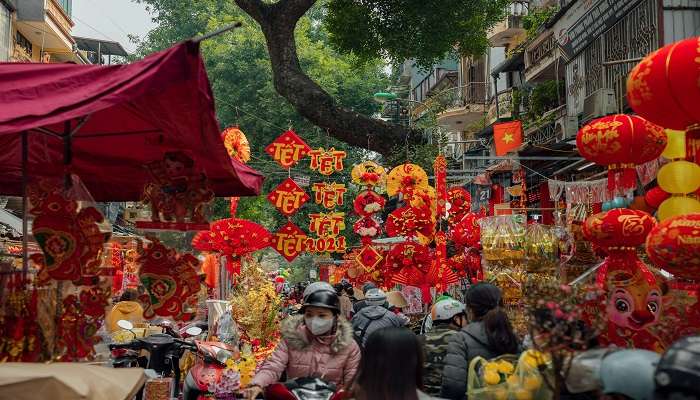
On the first day of the Tibetan New Year, people wake up early, bathe, and wear new clothes. They make offerings to God, mainly including Torma (a dough figurine of animals and demons).
Prayer flags are hung on the hills and roofs, and juniper leaves and incense are burned. Families exchange gifts, gather for dinner, and have a gala together. The custom of getting the year’s first bucket of water is also very significant. The housewives wake up before sunrise, heading to a nearby well or river to fetch water. This is believed to bring good luck to the family. Though the festival ends on this day, the celebration lasts 10 to 15 days.
Day 2: Lama Losar – The second last day of the Tibetan calendar

The first day of Losar falls on the 29th day of the 12th month of the year. Tibetans clean their houses and cook unique dishes like soup with small dumplings on this day. Monks in monasteries indulge in special rituals to prepare for the celebration.
Related Post: Festivals In Bhutan
Day 3: Gyalpo Losar – The last day of the Tibetan calendar

On the last day of the year and the second day of Losar, Tibetans head to the monasteries to pray and offer gifts to the monks. Monasteries arrange religious celebrations, and people dress up to enjoy them and have a good time.
At dusk, people celebrate with crackers and fire torches, believing this will scare away the evil spirits. The night is concluded with a special reunion dinner, during which case (cake) and chang (alcoholic drink) are served along with other delights.
Extended Losar Celebrations
Chunga Choepa, or The Butter Lamp Festival, on the 15th day of the Tibetan Calendar

The celebrations of Losar – the Tibetan New Year – are concluded with the Butter Lamp Festival, locally called Chunga Choepa. The day is spent making butter lamps and placing them in different city corners. Towards the evening, lamas light up the lamps, illuminating the streets.
It is an enchanting view, where everything is bright and lit up, families get together, people dress up, and they celebrate with good food and crackers – much like Diwali in India.
Related Post: Festivals Of Ladakh
Planning your holiday but confused about where to go? These travel stories help you find your best trip ever!
Real travel stories. Real stays. Handy tips to help you make the right choice.
Best Places To Celebrate Losar – The Tibetan New Year
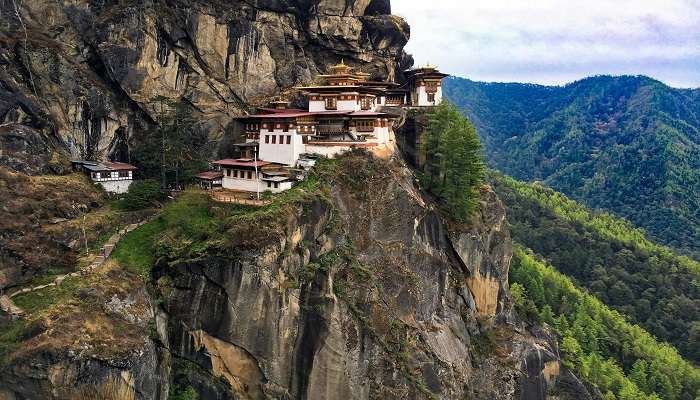
Indeed, Tibet is the best place in the world to witness the best Losar celebration! But where in Tibet? We have the answer!
- Shigatse Region
Shigatse is a busy city with gigantic beige hills and one of the largest in Tibet. The Losar Festival celebration in this region involves keeping the houses clean, decorating doorsteps with New Year paintings, eating guru (a dough containing white stones, wool, charcoal, and capsicum), and indulging in many entertainment activities like horse racing, dance, and music.
- Kongbo Area
Kongbo is also ideal for celebrating Losar, the Tibetan New Year. The style of celebration is a little different from that of the Shigatse region. On the last day of the year, people serve different dishes to dogs on a wooden plate, and based on what the dogs eat, they predict what will happen in the coming year.
- You can also celebrate Losar by planning a holiday in Sikkim, Ladakh, and Himachal Pradesh. However, the celebrations in these Indian destinations are not as grand as the Tibetan New Year celebration.
Date For Losar – The Tibetan New Year 2025
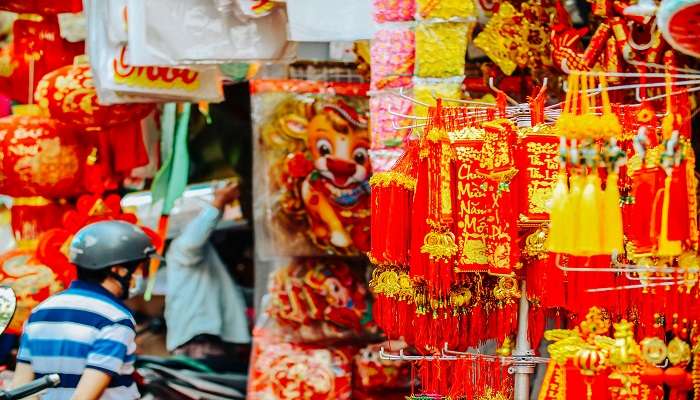
The Tibetan New Year date of Losar changes according to the Tibetan calendar. It is very similar to Chinese New Year, and sometimes the two fall on the same day. Dates for Losar for the next two years are:
Losar 2025 – 28 Feb, 2025 – Sun, 2 Mar, 2025
You May Also Like To Read: Bomdila Monastery
Tibet is one of the highest places on earth to celebrate the new year with Food, drinks, dancing, and performing arts. A Festival is nothing less than a treat for a culture vulture. If you are one, you cannot miss this New Year’s extravaganza. Book a trip to China to experience fun.
For our editorial codes of conduct and copyright disclaimer, please click here.
Frequently Asked Questions About Losar Tibetan New Year
How do people celebrate the Tibetan New Year?
Tibetan New Year is a 15-day festival that will begin on Friday, 28th February and continue till Sunday, 2nd March, 2025. Tibetans perform some ceremonies for purification and warding off evil spirits over the days.
Why do we celebrate Losar?
Losar is an essential festival in Tibetan culture that signifies the beginning of the new year. Tibetans believe that the happiness of God and spirits will bless them with a prosperous New Year. It is also a festival of gratitude for the harvest.
Where Is Losar celebrated?
Losar is mainly celebrated in Tibet and countries with Chinese populations.
What does Tashi Delek mean?
Tashi Delek is a Buddhist greeting associated with the festival of Losar. Though it is difficult to translate into English, it is interpreted as 'May all auspicious signs come to this environment.'
What is the Buddhist New Year called?
Buddhist New Year is known as ‘Losar’.
Looking To Book An International Holiday?
Book memorable holidays on TravelTriangle with 650+ verified travel agents for 65+ domestic and international destinations.
People Also Read
New Year In Jakarta New Year In Hong Kong New Year In Montreal

Experience the world through captivating stories of adventure and travel. As a senior content writer, I bring my passion for exploration to life, crafting tales that take you on a journey. With my words, you’ll feel the thrill of discovery and the joy of experiencing new cultures. Let me turn your imagination into a reality with stories that inspire you to explore and embrace the world.





















